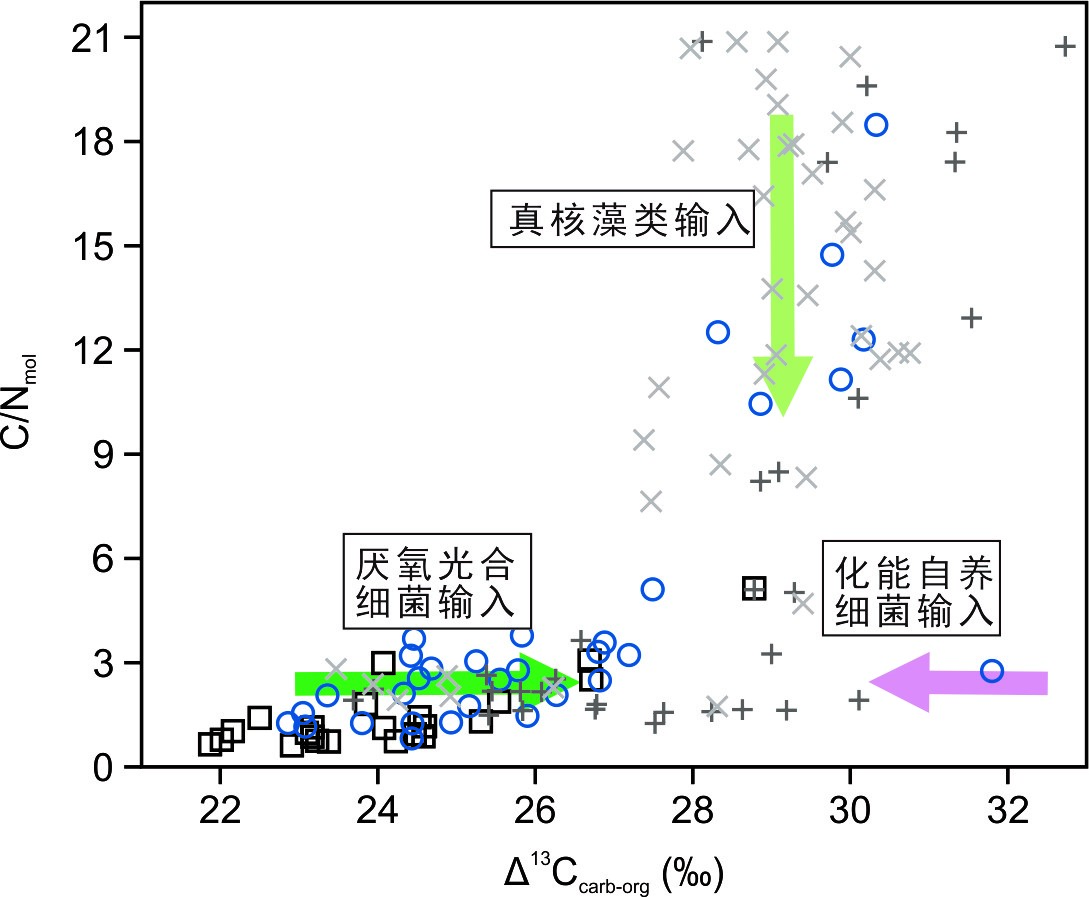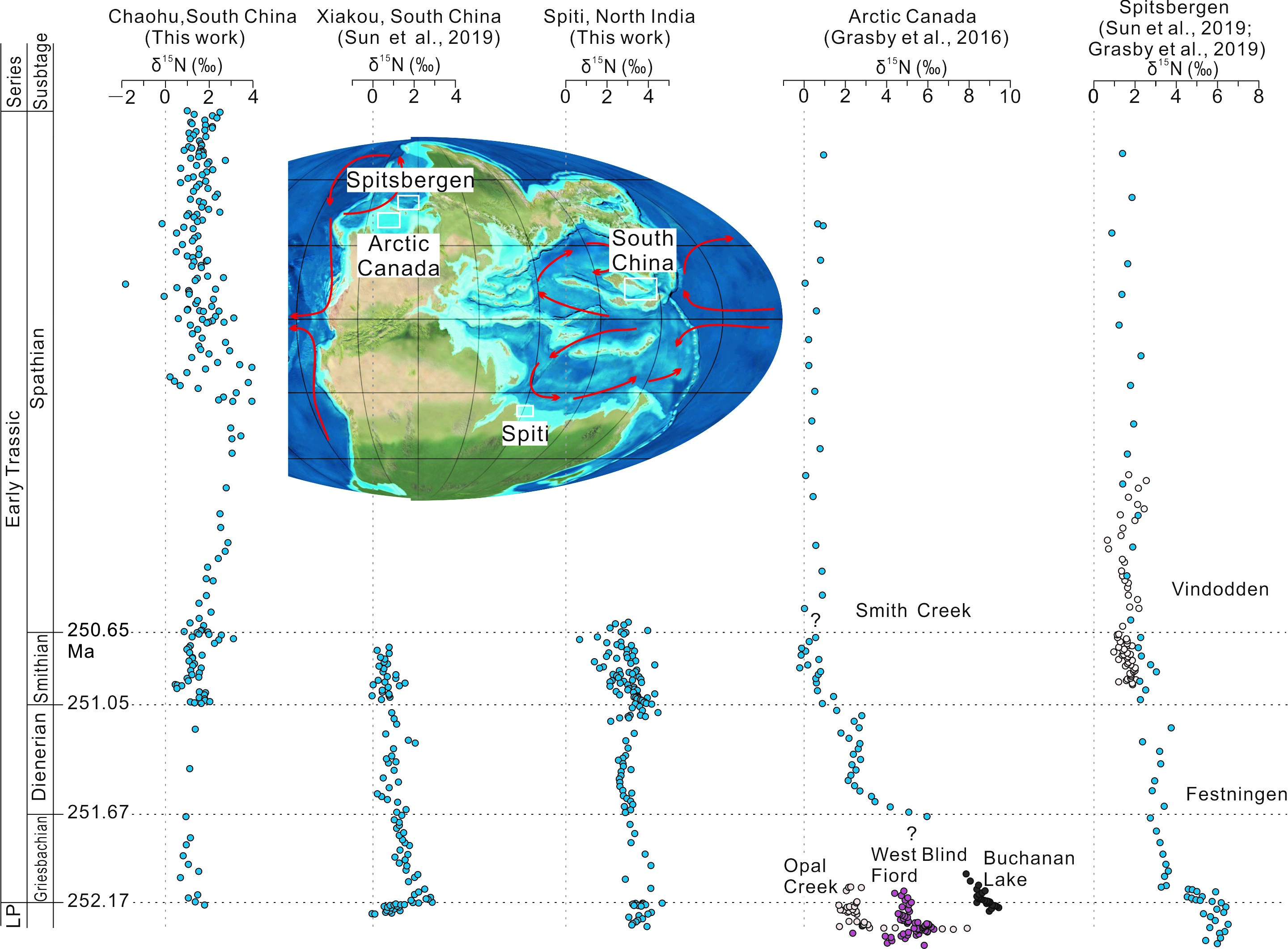Abstract
The recovery of marine ecosystems in the aftermath of the Permian-Triassic mass extinction was accompanied by significant carbon-cycle perturbations, as reflected in large-amplitude global excursions in Lower Triassic carbonate carbon isotope records. In the present study, we generated paired carbonate carbon (δ13Ccarb), organic carbon (δ13Corg), and nitrogen (δ15N) isotope records along with molar C/N ratios for a composite section in the Chaohu area of Anhui Province (northern Yangtze Platform, South China) that spans the entire Lower Triassic. These records document concurrent changes among multiple proxies related to marine plankton community composition, productivity rates, and nutricline structure, providing unparalleled insights into changes at the base of the marine trophic web during the Early Triassic recovery interval.

图1 早三叠世巢湖地区不同微生物类群对初级生产力的贡献
Cross-plots of element and isotope data from units 1–4 (see Fig. 3) of the composite Chaohu section, South China. (A) Carbonate carbon isotopes (δ13Ccarb) versus carbonate oxygen isotopes (δ18Ocarb). (B) Organic carbon isotopes (δ13Corg) versus δ13Ccarb. (C) δ13Corg versus total organic carbon (TOC). (D) δ13Corg versus molar C/N ratio. (E) TOC versus total nitrogen (TN). (F) Molar C/N versus carbonate-organic carbon isotopic difference (Δ13Ccarb-org). In B, linear regression slope (m) and coefficient of determination (R2) are 0.63 and 0.41 for Smithian (circles) and 1.01 and 0.57 for Spathian (crosses), respectively. In E, the near-zero y-axis intercept indicates no clay-bound NH4+ in samples. Two distinct C/N trends with slopes of ∼12 and ∼2 can be observed. In F, low Δ13Ccarb-org associated with low C/N ratios represents anoxygenic photoautotroph inputs, high Δ13Ccarb-org associated with high C/N ratios represents marine algae inputs, and high Δ13Ccarb-org associated with low C/N ratios represents chemoautotroph inputs.

Figure 2: Comparison of key Early Triassic bulk nitrogen isotope records: Chaohu, South China (this work); Xiakou, South China (Sun et al., 2019); Spiti, northern India (this work); West Blind Fiord, Opal Creek, Buchanan Lake, and Smith Creek, Arctic Canada (Algeo et al., 2012; Schoepfer et al., 2013; Grasby et al., 2016); and Spitsbergen, Svalbard (Sun et al., 2019; Grasby et al., 2020). The original profiles have been rescaled against the time scale of Wei et al. (2015). LP—Late Permian.
Title:Changes in productivity associated with algal-microbial shifts during the Early Triassic recovery of marine ecosystems
Authors:Yong Du, Huyue Song*, Jinnan Tong, Thomas J. Algeo, Zhe Li, Haijun Song, and Jiandong Huang
Source:Geological Society of America Bulletin, 2021, 133(1-2): 362-378.
Doi: 10.1130/B35510.1
Link to the paper:
https://pubs.geoscienceworld.org/gsa/gsabulletin/article/133/1-2/362/587469/Changes-in-productivity-associated-with-algal